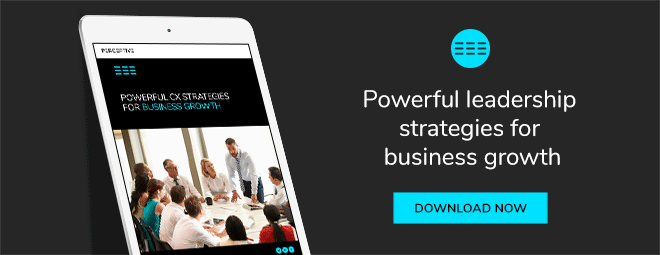To drive change or growth within your business, you need to understand your customers’ full and authentic experience. Improvement means change—and change is often hard.
Customer success is corporate success
Customer success and corporate success are one and the same: if your customers are successful with using your products and services, your corporate will be successful.
It’s about putting the customer first every step of the way. Leveraging the valuable insights derived from your customers allows you to create actionable and measurable business initiatives that lead to profitable growth.
Related content: 5 ways of leveraging the voice of the customer
Leverage your customer experience to drive business change
Research from McKinsey shows that companies that excel at delivering customer experience demonstrate six traits. They:
- Define a clear, compelling value proposition (delivered through holistic, end-to-end, customer journeys).
- Know that the customer journey matters, and why.
- Regularly innovate the customers’ experience.
- Use customer journeys to reinforce the front-line culture.
- Optimise operational processes to ensure delivery is consistent.
- Use journeys to define metrics and governance.
The whole customer journey is recognised as a crucial part of the system; without it the business cannot function, let alone innovate.
Further, the aforementioned study also shows that companies that focus on delivering an end-to-end customer journey are 30 per cent more strongly correlated with business outcome. These have as much as 36 per cent higher customer satisfaction levels and likelihood to renew and stay as a customer increases by 19 per cent.
Related content: The common pitfalls of customer experience management
Succeed at customer experience
With the below strategy, you can initiate the customer-led transformation within your business.
- Create a cross-functional business unit or team. These staff members will be in charge of implementing customer success for your business—but remember to assign one person with primary accountability. Define what customer success looks like for your business and align some set KPIs to enforce individual and group responsibility.
- Engage your client services team. Have them talk to their customers directly to understand barriers to success (and sales). What challenges are they facing? How are they spending time interacting with your product or service? This will also strengthen the client relationships for your services team, and ultimately helps solidify customer-centric thinking in your company.
- Get customer feedback and act on it. The way to make this efficient is to prioritise areas of needs; what must you deal with now, and what can you leave for later? Ideally, this feedback will be daily, at minimum. There’s no time to resolve issues like the present.
- Sharing is caring. Share your insights with management and other stakeholders. Why not even your customers? This builds trust by showing that you’ve listened and are taking action. Put together an internal and external facing email with some key bullets on your findings, leading them to a site with more detailed information, should they wish to learn more.
- Change it up. More than anything, it’s simply about organising your work in a different manner than before. Start at the end. Ask customers for feedback on a product’s functionality and features well ahead of time, even before you launch (at the ideation and development stages). This saves you time and money, and helps you learn crucial insights to make adjustments needed.
For more in-depth tips on leadership strategies to drive growth, get the free ebook Powerful Leadership Strategies for Business Growth here:
